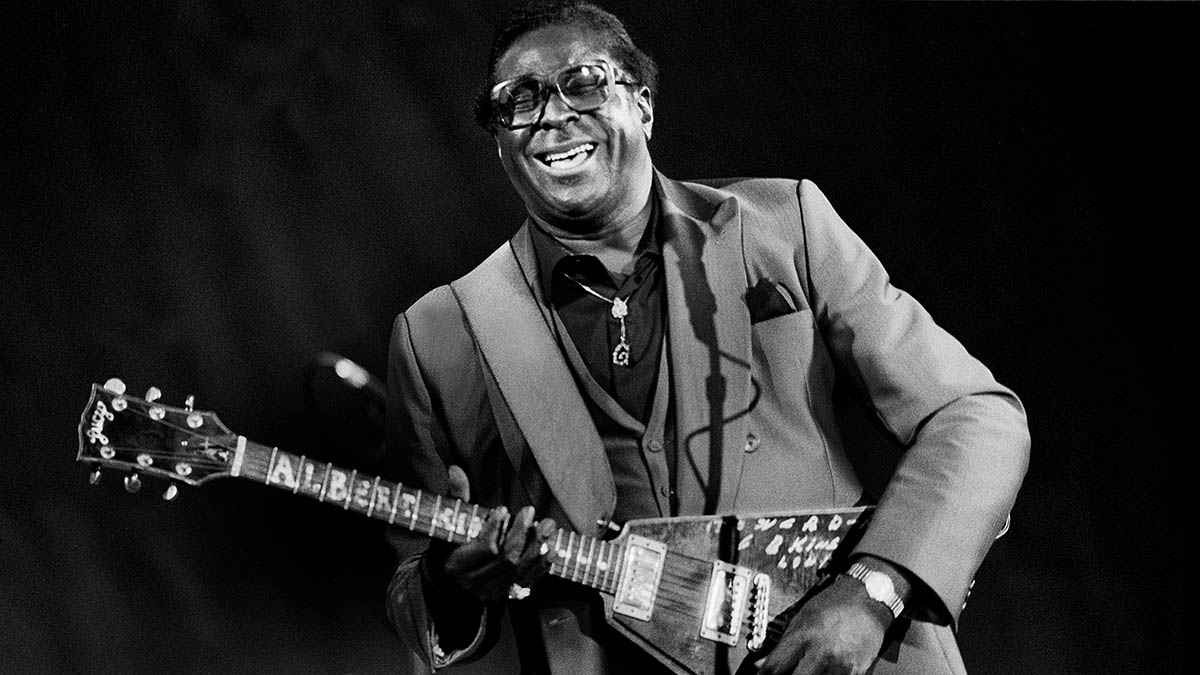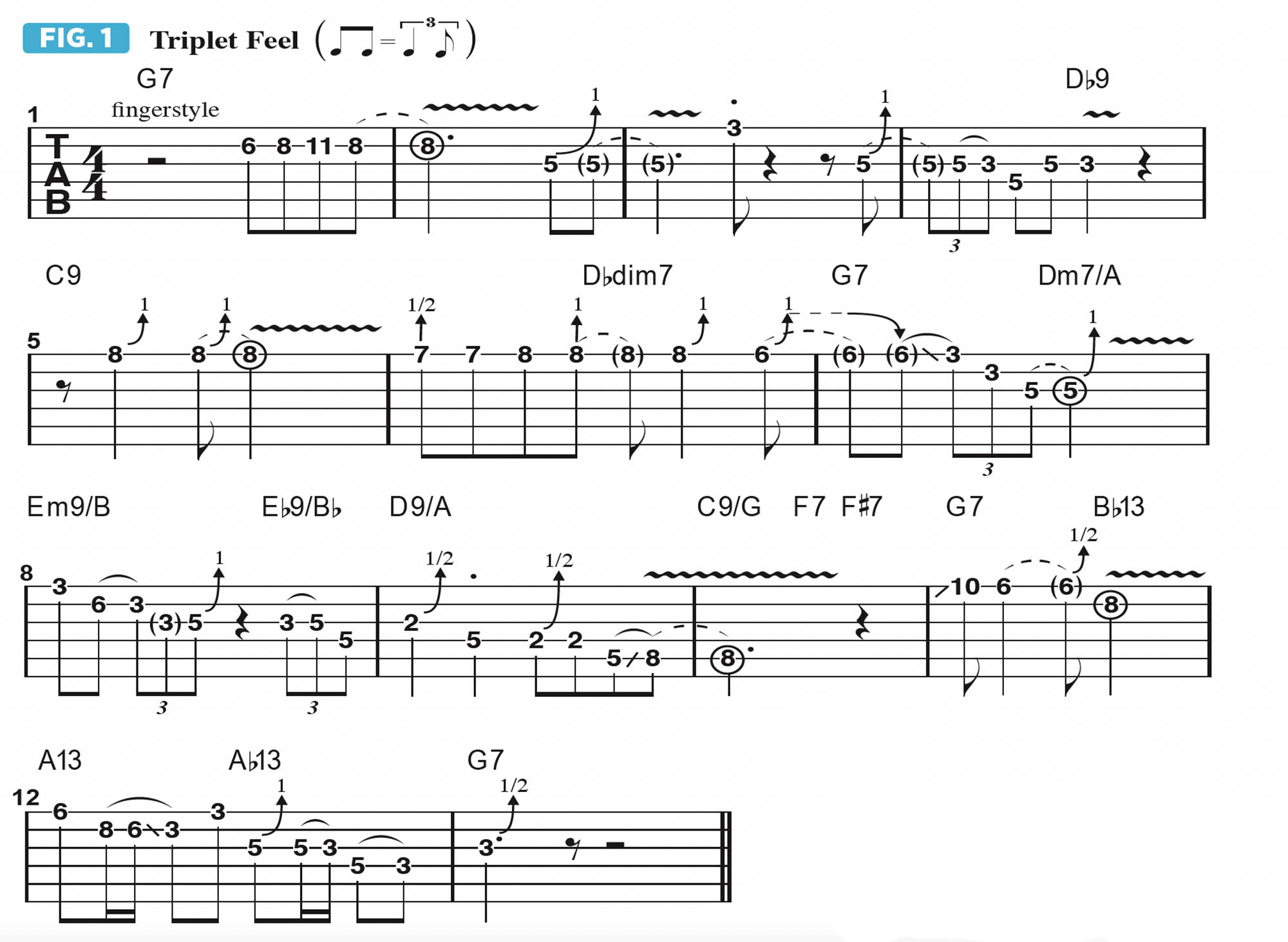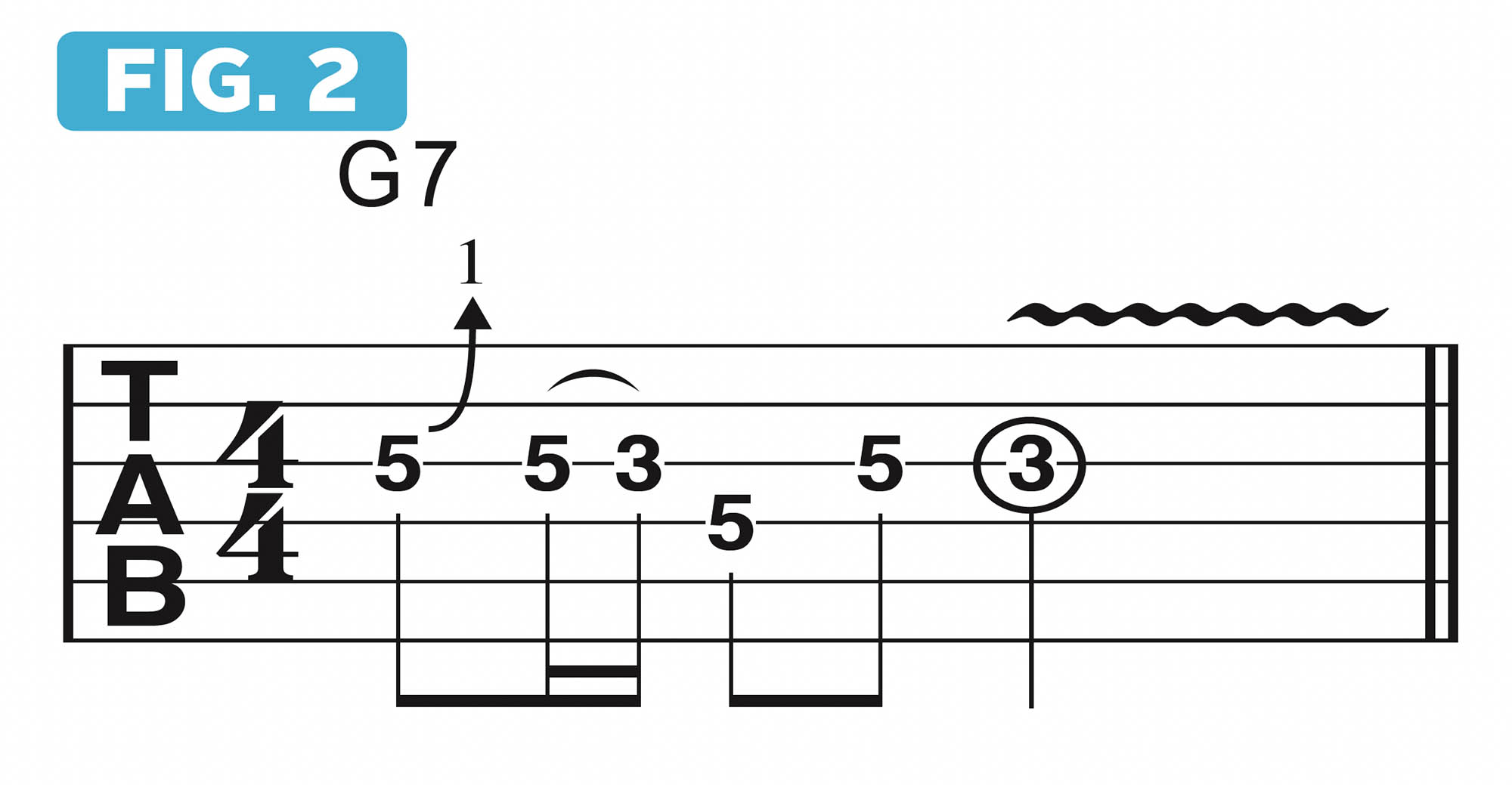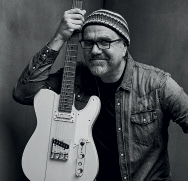
In last month's column, we explored an Albert Collins-like approach to soloing over a medium-tempo blues shuffle in the key of G. This month, I’d like to highlight the key stylistic aspects of one of the greatest blues guitarists of all time, Albert King, using the same soloing format.
For quick review, the rhythm part I solo over is based on a standard 12-bar blues progression in G, but I have added a few passing chords here and there. In the key of G, a typical dominant 7th-style blues consists of the I chord, G7, the IV, C7 and the V, D7.
Many guitarists, myself included, will often substitute a 9th or 13th chord for a 7th. The rhythm pattern starts with four bars of G7, and I substitute Db9 on beat 4 of bar 4, in order to resolve chromatically to the IV chord, C9, on the downbeat of bar 5. On beat 3 of bar 6, I use a Dbdim7 chord as a way to strongly “push” back to the I, G7, at the start of bar 7.
Through bars 7 and 8, I switch chords every two beats – G7 - Dm9/A - Em7/B - Ebm7/Bb – to set up the V chord, D9, that falls on beat 1 of bar 9. Bar 10 ends with a chromatic “walk-up,” F7 to F#7, which sets up the G7 in bar 11 nicely. In bars 11 and 12, I again switch chords every two beats, G7 - Bb7 - A7 - Ab7. This turnaround leads back to the I chord, G7, at the top (beginning) of the form.
Figure 1 is an Albert King-inspired solo played over this progression. Like Albert, I fingerpick here, using my index finger and thumb primarily and occasionally snapping the string against the fretboard for emphasis.

Most of the phrases are based on the G minor pentatonic scale (G, Bb, C, D, F), with the exception of bar 9, wherein I reference the parallel G major pentatonic scale (G, A, B, D, E).
When aiming to emulate Albert, one should focus on the vocal-like aspects of his style. All of the melodic lines are fairly simple and often broken into two- and three-bar phrases, with spaces in between, akin to the way a singer breathes between lines.
Another essential element of Albert’s signature sound was his finger vibrato, with its unique width and speed. Listen to Live Wire/Blues Power! for spectacular examples of Albert’s mastery of string bending and vibrato techniques.

Generally speaking, Albert’s pitch was usually a little bit sharp, due to his aggressive fingerpicked attack. The width of his finger vibratos was rather wide, and the speed was fairly slow, making them characteristically big, bold and vocal-like.

The initial vibrato in bar 2 is a “floating” style, wherein only the fingertip touches the guitar neck. In bar 3, I pull down on the string to create the vibrato, which yields a different vibrato sound than that produced by pushing the string upward.
Figures 2-5 focus on the distinct elements of the primary one- and two-bar phrases played in this solo. Work on each phrase separately, then explore how to best transition from one to the next.


Get The Pick Newsletter
All the latest guitar news, interviews, lessons, reviews, deals and more, direct to your inbox!
Greg Koch is a large human who coaxes guitars into submission in a way that has left an indelible print on the psyches of many Earth dwellers. Visit GregKoch.com to check out his recordings, instructional materials, signature musical devices and colorful hats.










![Joe Bonamassa [left] wears a deep blue suit and polka-dotted shirt and plays his green refin Strat; the late Irish blues legend Rory Gallagher [right] screams and inflicts some punishment on his heavily worn number one Stratocaster.](https://cdn.mos.cms.futurecdn.net/cw28h7UBcTVfTLs7p7eiLe.jpg)
